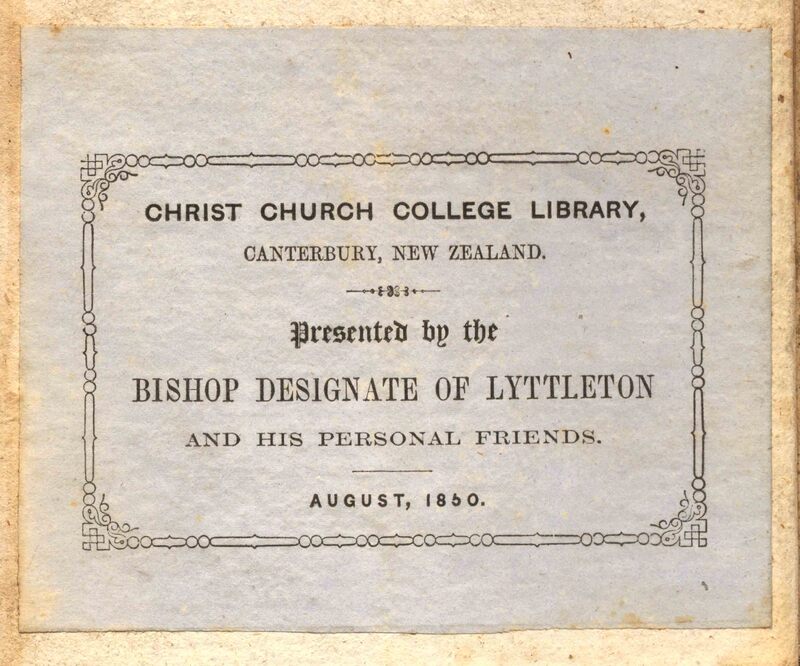The Canterbury Association
The library of the Canterbury Association was collected, by gift or purchase, to fulfil the educational and ecclesiastical objectives of the Association.
The items were shipped to Canterbury on many of the Association Ships between 1850 – 1854 and found their way to the reading rooms and educational institutions planned by the Association. Today we can identify works from this library from several institutional bookplates and personal inscriptions found within them. The bookplate of the Bishop Designate of Lyttelton, Thomas Jackson, is the most prolific of these institutional bookplates. Jackson travelled the UK to gain support for the founding of the colonial settlement of Canterbury, on his travels he was presented with books from a number of individuals. Among these was a substantial library from the Honorable and Reverend Arthur Philip Perceval, whose initials (A.P.P.) appear on the bookplate of Thomas Jackson to indicate which came from his donation.
The Society of Canterbury Colonists also received donations and had a bookplate to indicate which came from their library. The Society were those who were intending to immigrate to Canterbury and on arrival changed their name to the Lyttelton Colonists Society. This group formed the Reading Room in Lyttelton. This Reading Room is the first library to be established in the Canterbury Association period.
The Canterbury Association continued to receive gifts for their libraries, from the colonists as well as major institutions such as The British Museum, Oxford University and the British Library. It is believed that that bookplate found in these items was designed and printed in New Zealand as it contains not only the names of colonists established in the province, but most telling the name finally settled on for the school being ‘Christ’s College’ rather than Christ Church College as found on the earlier Bishop Designate bookplate.
The majority of the books were, over-time, moved from storage at the Lyttelton Immigration Barracks to the Library of Christ’s College, which was the first of the two educational institutions planned by the Association, the second being a University based on the Oxford model. The University, or Canterbury College as it was known was not established until the demise of the Canterbury Association. It was during the University’s ‘Collegiate Union’ period that many of the books intended for the ‘higher educational institution’ were transferred and are still found today. Many others were not received until 1983 when the University received the books held by the Dean and Chapter of the Anglican Cathedral.


